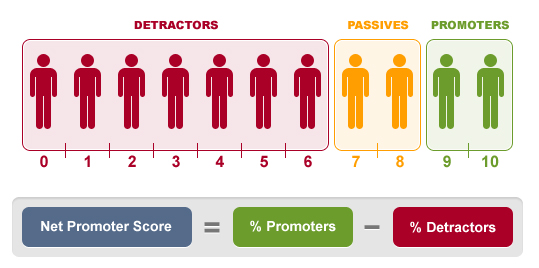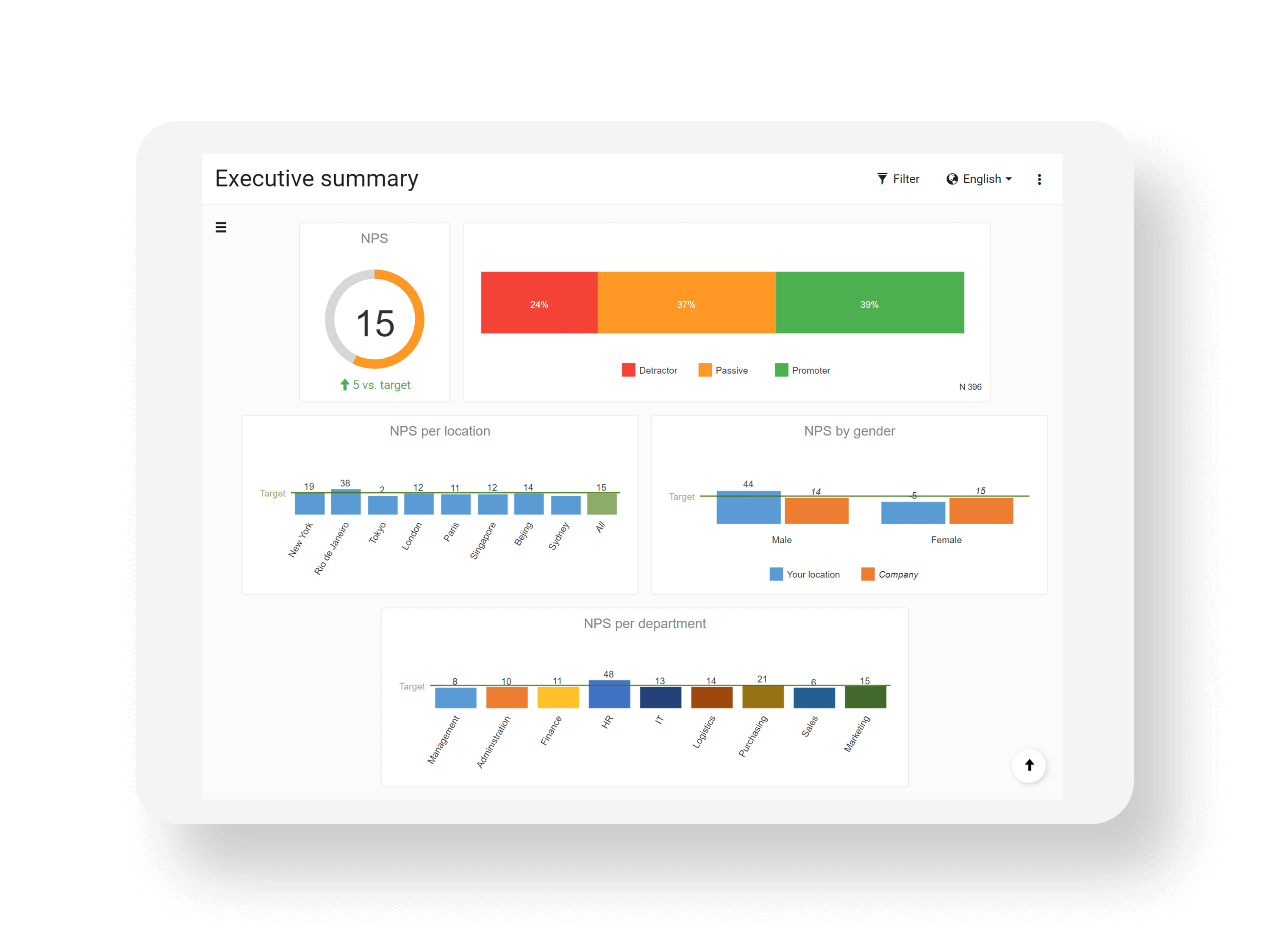While many businesses focus on customer loyalty and customer satisfaction to increase revenue, it is very hard to get good results if you don’t have engaged employees. Turnover is a huge cost and it takes on average the equivalent of 6-9 months worth of salary to find and train a new employee.Research also shows that organizations with highly engaged employees have an increase in sales up to 20%. Their enthusiasm rubs off on their co-workers providing enhanced productivity and better experiences for customers, hence the increase in revenue. The key for company leaders is understanding employee engagement levels and knowing how to improve them. The traditional once-a-year employee survey simply doesn’t suffice anymore. But how do you get started?
What is the employee Net Promoter Score?
The employee Net Promoter Score is based on the NPS, a metric used to monitor customer engagement. The eNPS measures how likely your employees would recommend your company as a place to work. Just like the Net Promoter Score, the employee NPS revolves around one simple question:
“On a scale from one to ten, how likely would you recommend this company as a place to work?”
Depending on the answers, employees are sorted into Promoters, Passives and Detractors.
Promoters = respondents giving a 9 or 10 score
Passives = respondents giving a 7 or 8 score
Detractors = respondents giving a 0 to 6 score
As with the Net Promoter Score, it’s crucial to include a follow-up question. Both detractors and promoters can give valuable feedback as to why they gave their score. Perhaps they don’t like their manager, or they think they aren’t paid enough … Whatever reason, as an employer you will want to know so you can start working on your score. Remember, the goal is not getting the score itself, but the measures you take on improving your score.
How do you calculate your eNPS?
The calculation of the eNPS is quite simple. It is calculated as the difference between the percentage of Promoters and Detractors. The eNPS is not expressed as a percentage but as an absolute number lying between -100 and 100.
For instance, if you have 25% Promoters, 55% Passives and 20% Detractors, the eNPS will be +5. Don’t make the common mistake of placing a percent sign (%) behind your eNPS, it is not a percentage.

eNPS and anonymity
As opposed to the traditional Net Promoter Score system where you can call unsatisfied customers and start a conversation, anonymity must be guaranteed with the employee NPS survey. This means that all follow-up questions must be directly included in the survey. Also, it means that your efforts to improve the eNPS cannot be directed at specific ‘unhappy’ employees but rather they need to be applicable to the entire staff.
We also recommend sending an eNPS survey to a small portion of your employees every day, instead of one survey to all your employees at one specific point-in-time. This ensures a steady stream of input. This way, you can already start taking action towards a better result. Alternatively, you may send a survey to each employee every 90 days or every working anniversary to monitor progress.
Advantages of the employee NPS
1) Short & easy
The eNPS survey is short and easy to manage, making it very popular to use. Because it is only one numerical question, there goes no time to waste thinking about the right survey questions. Also, employees are likely to fill out your eNPS as it doesn’t take a lot of time or effort.
2) Easy to understand results
Because your result is only one single number, it is very easy to understand. When put on a timeline, you can find out whether you’re improving or not at a glance. But, keep in mind that the number itself doesn’t tell you anything. It is the follow-up question that can give you the insights you’ll need.
3) Honest feedback
Because your eNPS is anonymous, your employees will provide you with valuable feedback. You don’t want them worrying about whether they can be honest or not or if their boss will find out if they wrote something negative. Make sure the answers are treated with care and your employees will give you the real insights in what they think.
Some remarks
Just like we’ve discussed the critical remarks of the NPS, these apply to the eNPS as well.
There is a lot of scepticism whether the NPS and the eNPS are too simple. Some people will say it is not possible to measure behaviour with one question. Therefore we will always recommend adding a follow up question to get more context to find out on what you actually need to improve on. eNPS can serve as a starting point, but it is the motivation behind the score that can turn feedback into action.
Net Promoter and NPS are registered service marks, and Net Promoter Score and Net Promoter System are service marks, of Bain & Company, Inc., Satmetrix Systems, Inc. and Fred Reichheld


Laisser un commentaire